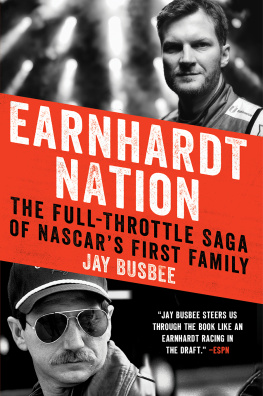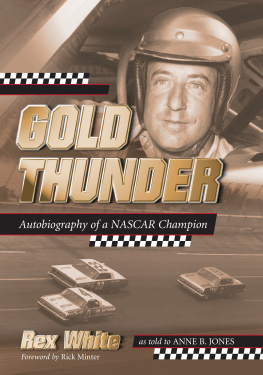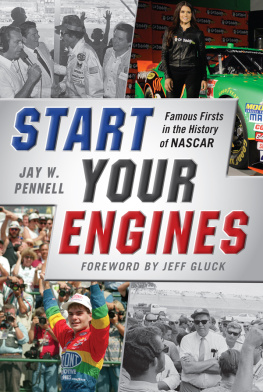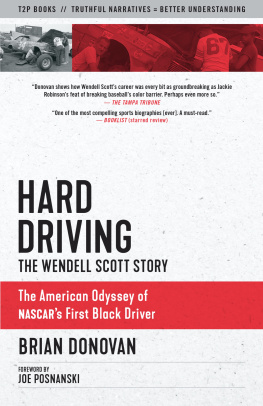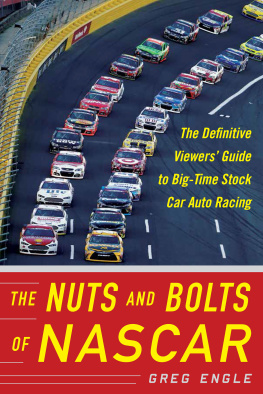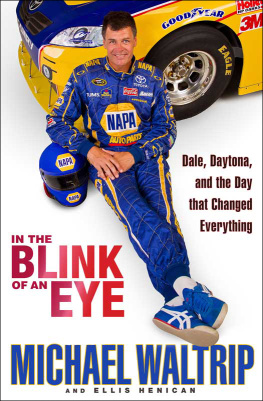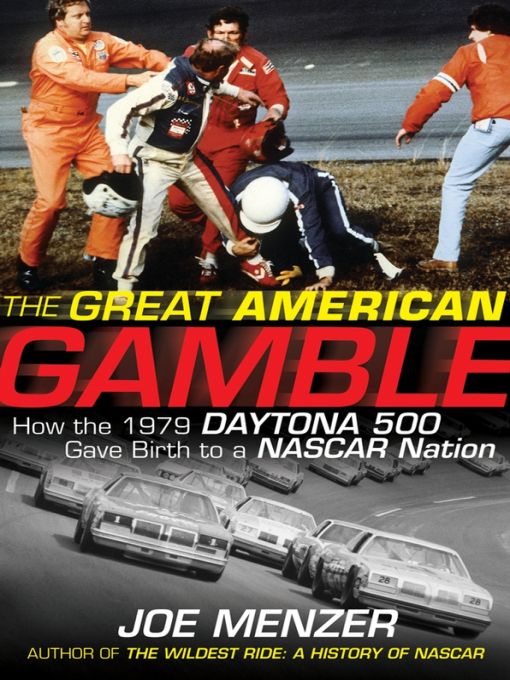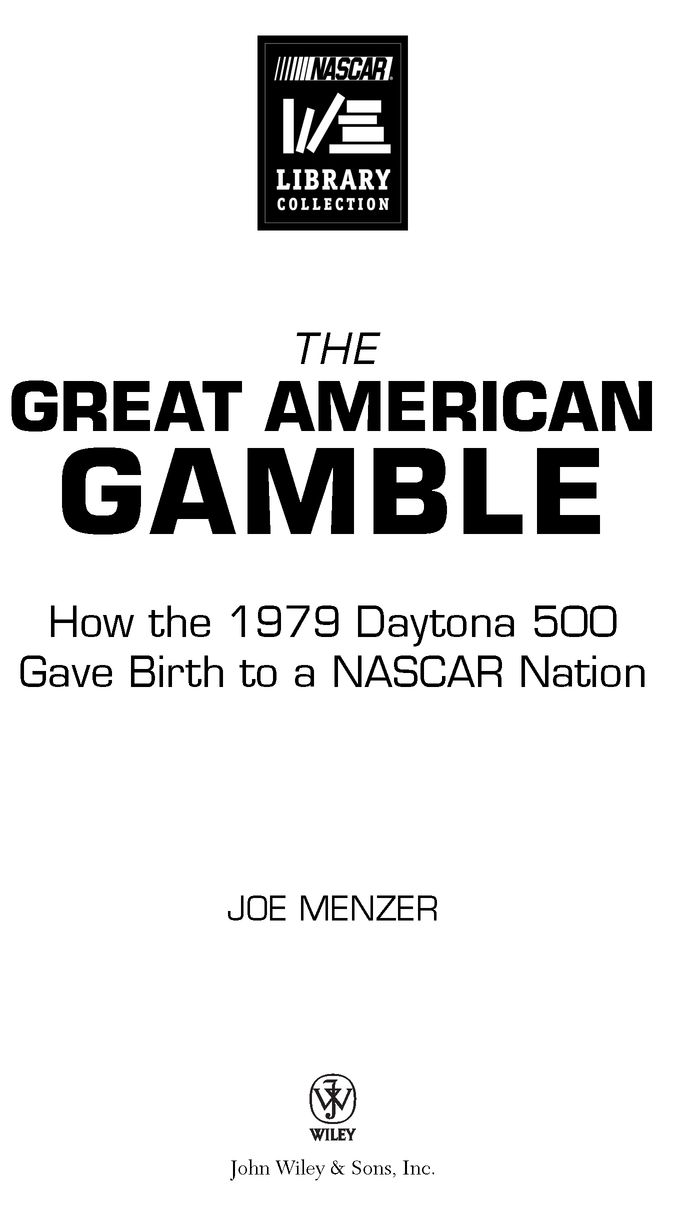Table of Contents
As always, for Sarah and the kids and for my parents But also for Aunt Mary Ann, who is always there for us
Acknowledgments
It is a clich to say that writing a book is a team effort. It also happens to be true. Much the same way as a NASCAR race team has never been about just the driver, who tends to get all the glory when everything goes right and every ounce of blame when he wrecks in the fifth lap of a 500-mile event, writing a good book takes a coordinated effort among many talented people over a sustained period of time.
This collaboration was no exception. It would never have happened in the first place if not for the vision of Stephen S. Power, my editor at John Wiley & Sons, who saw the 1979 Daytona 500 as not just an epic race but also a truly historic, sport-changing event, one thus deserving of deeper exploration in a book. So to him and all those pulling the strings behind the scenes at Wiley, a huge thanks.
None of my books ever would make it to publication without the tireless efforts of my literary agent, Shari Wenk, who always sees the silver lining and offers words of encouragement no matter what challenges may arise during the course of writing them. Another huge thanks goes out to her as well.
Those who know me the best understand what a trying time it was in the fall of 2006, when my nearly twelve-year run as beat writer of a National Football League team for a newspaper abruptly came to an end. Fortunately for me, within literally hours of being unceremoniously and at least somewhat unexpectedly downsized, I was put in touch with Duane Cross, managing editor of NASCAR.com. We spoke that very afternoon as I drove home from the meeting where the ax fell at the newspaper. It was on a Friday. We talked again the following Tuesday, and shortly thereafter Duane was kind enough to offer me a job.
Little did I realize at that moment that it would be a better job in every way. It is one that I feel truly blessed to have now, going on two years later. I took it only under the tepid stipulation that Duane knew I already had agreed to write this book, and he not only did not let that stand in the way but also openly and actively encouraged me to pursue it. Thus, my worlds collided, and I suddenly was covering full-time the very sport I already had immersed myself in for a previous book and was beginning to do so again for this one. I told everyone that last time, I had parachuted into the NASCAR world for eighteen months and then floated back out; this time, I was coming to stay, hopefully for a whole lot longer. It proved to be a perfect match, and I applaud Duane not only for understanding my pursuit of material for this book from the start but for cheering me along every step of the way. He is without a doubt the best boss I have had in more than twenty-five years in the journalism business.
Others on staff at NASCAR.com, a division of Turner Sports New Media, have been helpful throughout my relatively short tenure there. Among them are Josh Pate, Bill Kimm, and Jarrod Breeze, who take the stories I write for the Web site and make sure they make sense while also dressing them up with all kinds of nifty graphics (these guys also get out of the office in Atlanta to make occasional appearances at racetracks and help produce content); plus my colleagues who regularly help cover events at the tracks on race weekends: Mark Aumann, David Caraviello, Dave Rodman, and Raygan Swan. For as small as our staff is, we cover a whole lot of ground and cover it well, which is why NASCAR .com is the most popular Web site in the nation when it comes to fans of stock car racing who are looking for honest and straightforward features, opinions, and news, much of which is stuff they simply cannot get anywhere else. There also is the matter of the proactive long-range vision and energy that surges through the entire Turner platform behind the scenes, starting with our bosss boss, Scott Doyne. It truly is an honor to be a part of it as we move forward and on to even greater achievements.
Special thanks has to go out to Aumann, by the way. I happened to be covering a race with him in Phoenix in November 2007 when our conversation turned to the 1979 Daytona 500, and he began enthralling me with tales of attending the race and sitting in the grandstands that magical day with his father, Robert. I had been looking for someone who could provide some first-person perspective from that unique angle, and it turns out he was sitting right next to me all along!
None of this could have transpired, however, without the never-ending assistance of the good folks at Petty Enterprises. Richard Petty not only is a super and tireless ambassador for the sport he once dominated as a driver, but he possesses as little ego for a man of his stature in a sport of any legendary competitor I have ever had the pleasure (and occasional displeasure) of interviewing. And Ive interviewed more than a few over the years while covering Super Bowls, NBA playoff and All-Star games, World Series games in baseball, and big-time events at the collegiate level. Richards humbleness and downright honesty is nothing short of refreshing. He gave many interviews for this book, including one lengthy one in his modest office in Level Cross, North Carolina, where it was just him and me. Thanks also to public relations men Jeff Dennison and David Hovis for helping make that happen, and for making the King accessible to his many racing subjects just about whenever anyone makes a reasonable request of him.
Richard wasnt the only one in the Petty Enterprises family who was unbelievably generous with his time for this project. In fact, its safe to say that no interview subject was more giving of his time and energy than Richards second cousin and longtime crew chief, Dale Inman. It took both men quite some time to sort out their memories about how often and exactly when Richard was forced to the hospital to have work done on a stomach contaminated with ulcers; and other times Inman had to serve as the Petty tiebreaker on historical matters when Richard and son Kyle Petty didnt quite agree on the way something went down. But Inman was tireless in his efforts to help me get it right, and for that I am deeply appreciative.
Plus they all agree on one thing. Whenever Richard did get out of the hospital after getting worked on for those troublesome and painful stomach problems, he always had the same request that made the King seem all the more a mere human mortal.
He always wanted us to take him for ice cream, said Inman, smiling as he so often did when telling one of his great stories.
Thanks to Kyle, too, for he was generous with his time as well. The same goes for so many others who agreed to be interviewed at one time or another, usually in a one-on-one session but sometimes in a group setting prior to the running of a NASCAR race or another event. These included Bobby Allison, Donnie Allison, Cale Yarborough, Junior Johnson, Buddy Baker, Darrell Waltrip, A. J. Foyt, Ned Jarrett, Humpy Wheeler, Ken Squier, Richard Childress, Jim Hunter, Dick Fleck, David Pearson, Doug Rice, Max Muhleman, Ricky Rudd, Geoffrey Bodine, Sterling Marlin, Marvin Panch, Leonard Wood, Eddie Wood, Larry McClure, and Michael Waltrip, among others Im sure I unintentionally have forgotten to mention here. For that I apologize. My thanks go to anyone and everyone who helped tell this story.


